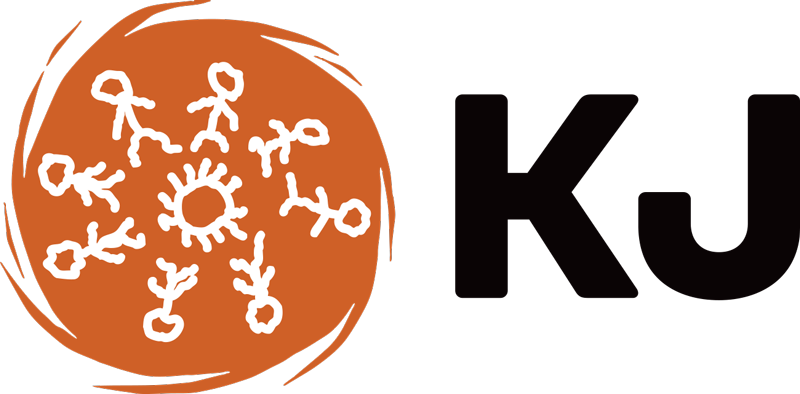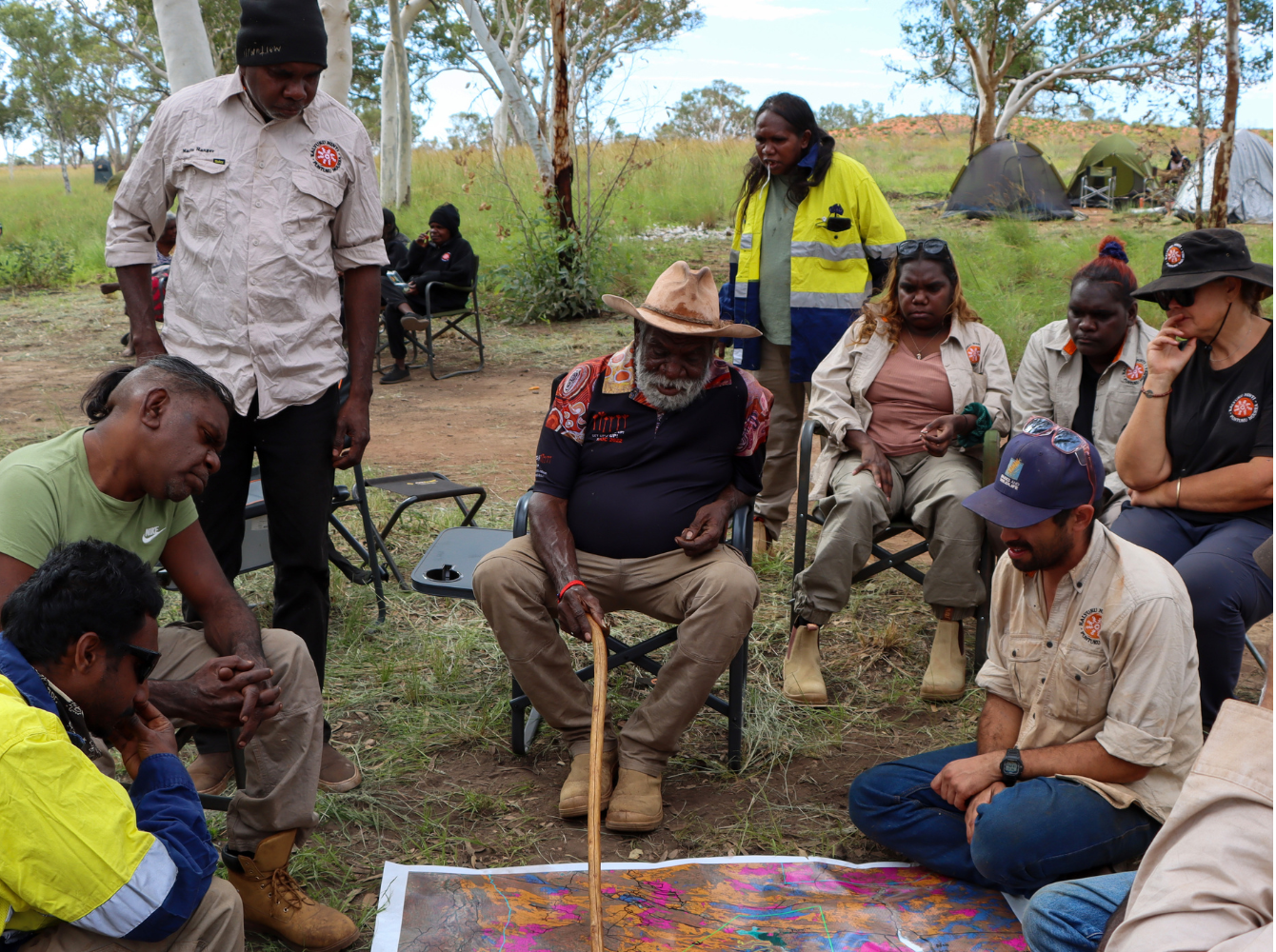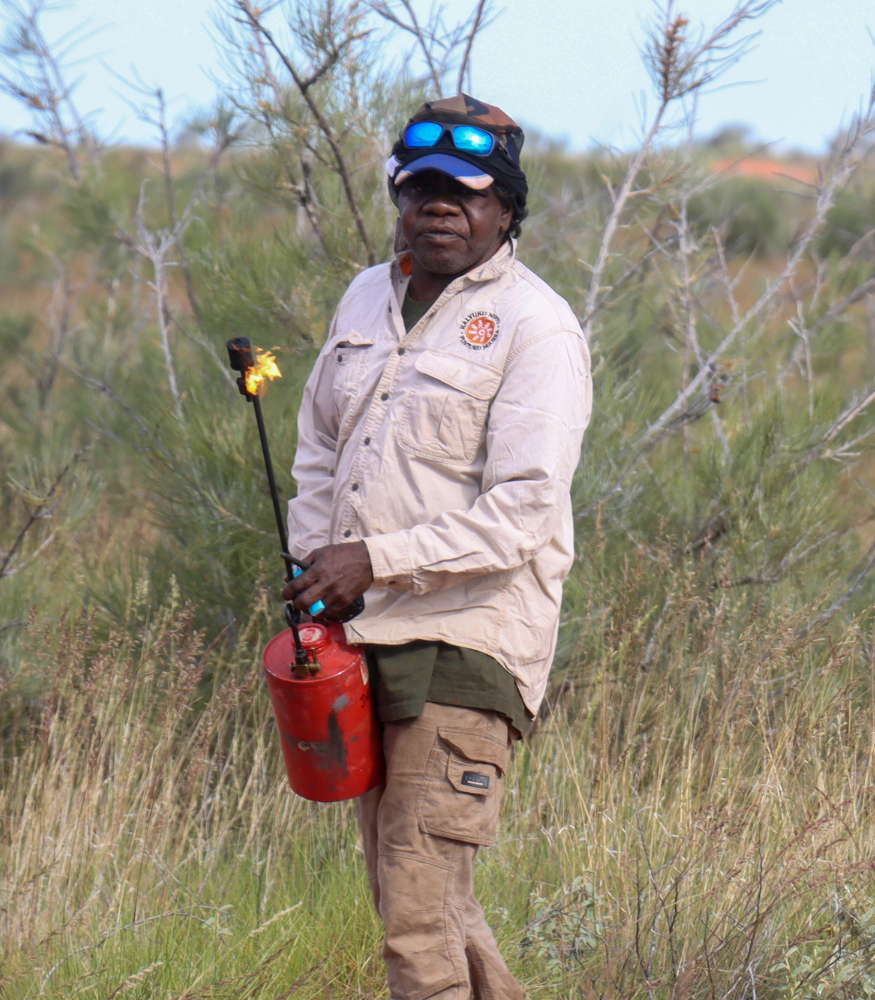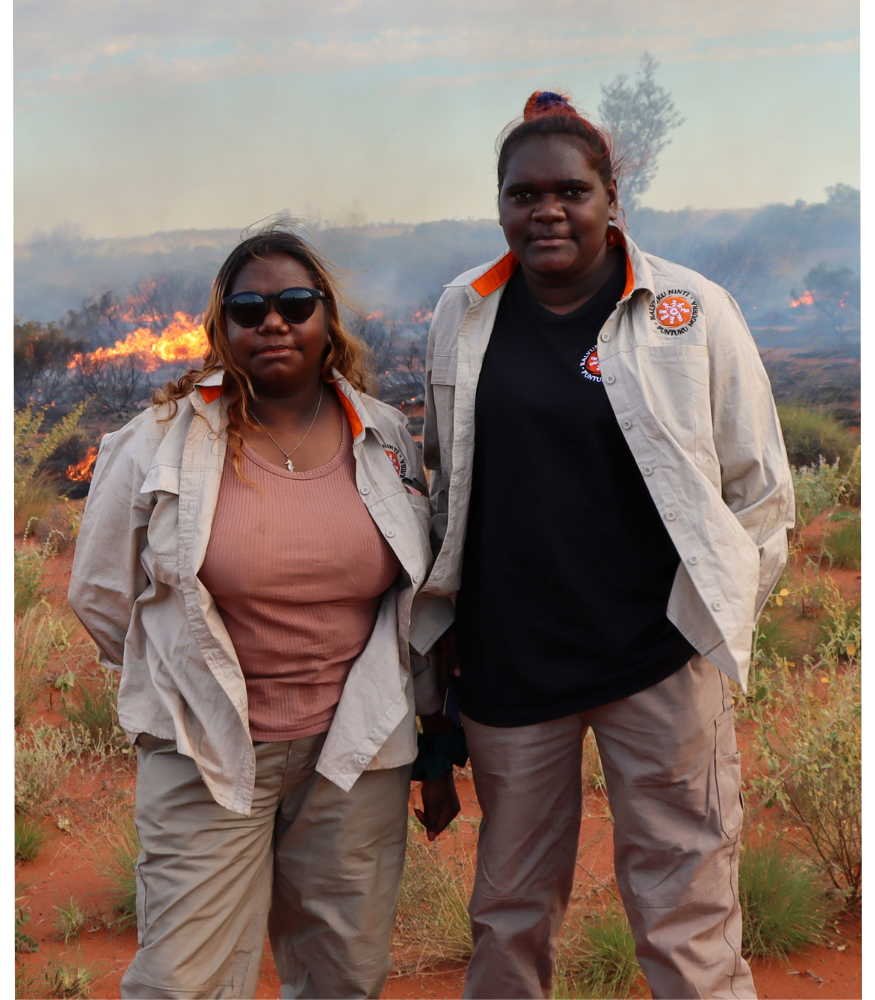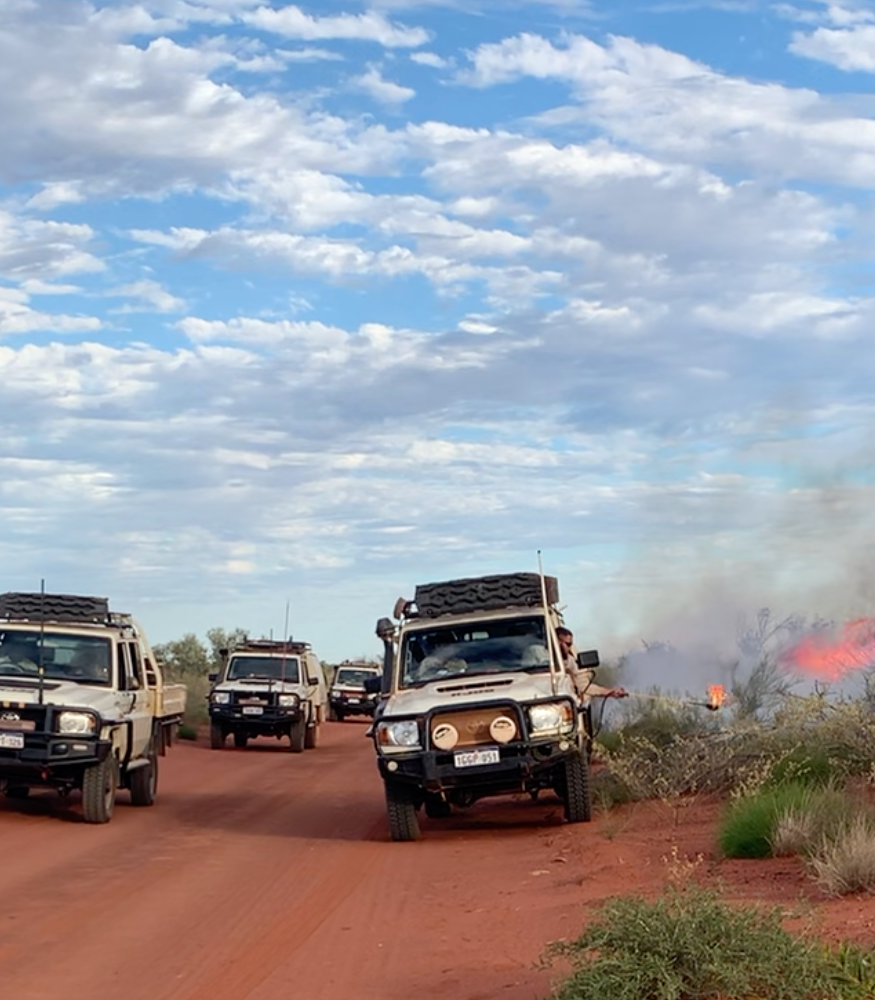Fire Training Exercises at White Gums Camp
Over 100 Martu from Jigalong, Punmu, Parnngurr, and Kunawarritji communities participated in fire training exercises during a five-day camp at White Gums to enhance their knowledge and skills for conducting safe and effective burns as part of land management. Conducted in partnership with the Department of Biodiversity, Conservation, and Attractions (DBCA), the training exercises promoted two-way learning.
Facilitators Jowel, Tristan, and DBCA District Fire Coordinator Leigh divided the group into three teams of about 30 individuals, and each crew was allocated approximately 15km to work in. The groups had varying experience levels, with more experienced rangers helping younger rangers learn through observation.
The training covered various topics, such as interpreting fire scar maps, operating a drip torch, edging, observing fire behaviour, using UHF communications, and blocking roads for tourist safety. Rangers were encouraged to draw on their experience and confidence to incorporate burning into all aspects of cool-season ranger work.
Before conducting the burns, the groups consulted with Cultural Advisor Muuki and Traditional Owner Terry to ensure they were okay with the burns that were about to be performed.
The Parnngurr team conducted a burn to the south, with Anthony and Randall using a vehicle-mounted drip torch, a new piece of equipment provided by DBCA. They were amazed that they could conduct a burn from the comfort of a Land Cruiser seat! They ran an ignition line on the western side of a triangle of spinifex to provide a safe edge for burning towards. From there, it was hard to contain the enthusiasm of the rest of the team. Junior (Jakarr) led a flurry of match lighting on the eastern side of the triangle to allow the fire to carry through.
After Mason had put an edge on the south-facing side of the triangle to contain the burn, Muuki suggested that the group drive onto a track to the southeast to implement a blocking burn. He proposed lighting the fire on the west side of the access track to produce a linear burn that would run parallel to the road and terminate approximately a kilometre away in some 5-year-old spinifex. As a precaution, Jowel and Kate devised a plan to edge the road with a vehicle-mounted drip torch to contain the burn.
However, when the rangers were in place, Muuki’s fire had already ripped through the spinifex, which was well overdue for a burn. It extinguished itself just as Muuki had planned.
Before driving to the following controlled burn location, Jowel instructed all rangers on identifying continuous fuel using the KJ fire scar mapping. Mason, Randall, and Murphy were particularly interested in how the group had identified areas needing burning from satellite imagery. Discussions with Murphy led to ideas on how the Martu could use this imagery to diversify and target the locations of Martu hunting fires.
During this controlled burn, all rangers used the drip torch. They walked the edge of the burn area, swapping to give each other experience of lighting the inside line with the drip torch. When not using the drip torch, rangers assisted the burn by igniting discontinuous fuels with matches.
The training was successful, with the rangers displaying enthusiasm and a willingness to learn. Overall, this was a positive step towards empowering younger rangers to take a more active role in land management and fire prevention. It again demonstrated Martu's intimate knowledge of fire on Country.
📷: Fire Engagement Coordinator Jowel consults with Mukki and Parnngurr Rangers over a fire scar map; DBCA District Fire Coordinator Leigh provides KJ rangers drip torch training; Punmu Ranger Neil using the drip torch; Parnngurr Rangers Chloe and Kiarah; Mason using the vehicle-mounted drip torch.
